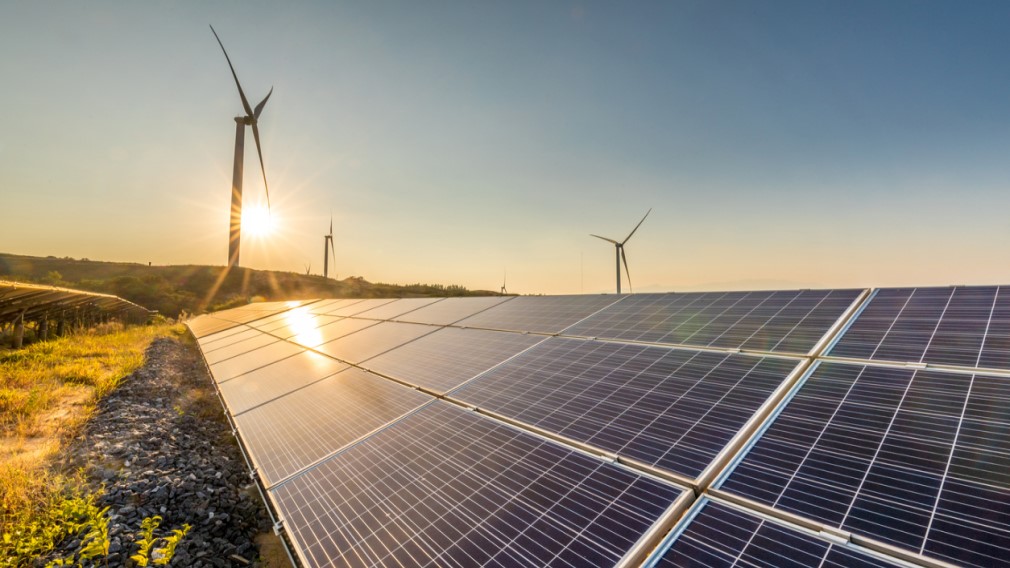Commodities Update June 2024
The last month has seen a broad-based softening of commodities outside of met coal and LNG. This issue we continue our exploration of the base metals market, with a view to understanding their role in the transition to a low carbon economy. This month we focus on alumina, the raw material for aluminium (accounting for 30-40% of the primary cost of aluminium production). Here, constrained Chinese production, and rising demand look set to see prices remain elevated and volatile.
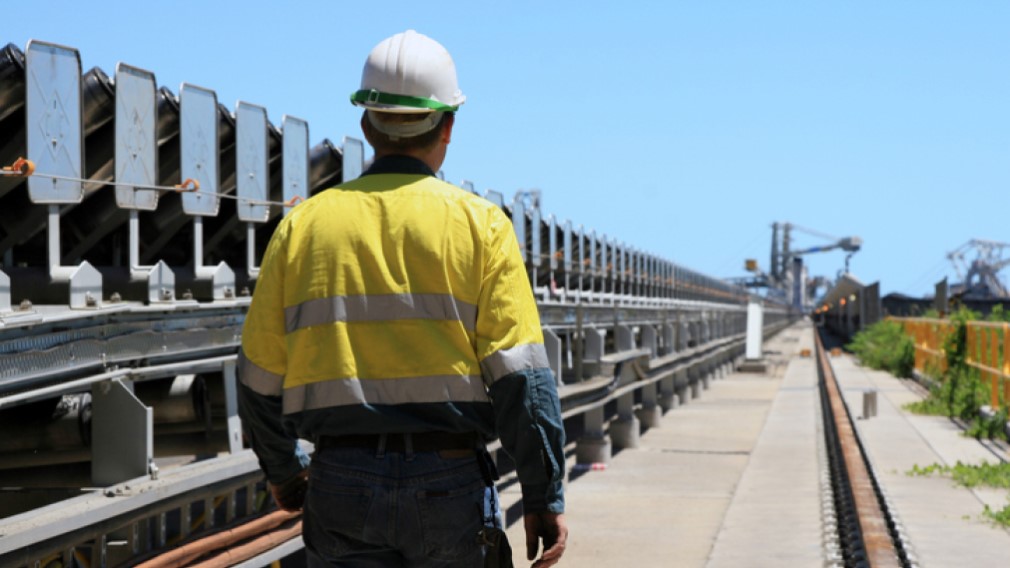
The following is based on text from the Westpac June 2024 Market Outlook
For more details of our longer-term forecasts see Westpac June 2024 Commodity Forecast
Our broad commodities index, the Westpac Export Price Index, (WEPI) soften in the month (-2%) as robust met coal and LNG prices were offset by softer iron ore, thermal coal, crude oil and most base metal prices. We have done a bit of ‘marking-to-market’ for our near-term forecasts, but our long-held profile is broadly unchanged. We still expect iron ore prices to weaken this year, down to US$85/t by end 2024, ‘ditto’ for met coal (US$230/t by end 2024) and thermal coal ($120/t by end 2024). We are expecting crude oil to hold around current levels (US$80/bbl) through to late this year when lacklustre demand sees prices dip below US$80/bbl. While we hold a constructive medium-term view for metals associated with the transition to lower carbon emissions, we believe the current rally in base metals is overextended and expect a correction to take copper down to US$9,300 and nickel down to US$17,000/t by the end of the year. All-up we are looking for the WEPI to fall around 10% by the end of the year.


Crude oil
We were surprised by the extent of recovery in crude markets from the recent two-month lows. There have been some signs of softening post the EIA report of US crude inventory lifting by a larger than expected 3.7mb while gasoline stocks gained 2.56mb and distillate rose 882kbpd. In addition, the IEA released its monthly Oil Market Report and cut its change in demand forecast for 2024 by 100kbpd, taking it down to a rise of just 960kbpd. The EIA also noted that “oil’s subdued outlook is expected to carry forward into 2025, with a modest increase of 1mbpd reflecting lacklustre economic growth, an expanding EV fleet and vehicle efficiency gains”. The IEA then released its annual report on crude oil “Oil 2024” which forecast “peak oil demand” later this decade. In the report the IEA outlined “a major supply surplus emerging this decade, suggesting that oil companies may want to make sure their business strategies and plans are prepared for the changes taking place”. The IEA is forecasting oil demand to peak at 105.59mbpd in 2029 – this is the first time the IEA has put out a forecast for peak oil demand. The report highlights that OECD demand peaked in 2023 due to declining demand from Europe, US demand is forecast to peak in 2025 while the pace of increase in African demand peaks in 2026.
OPEC, quite naturally, had a strong response to the report producing their own report Energy Aspects quoting the OPEC General Secretary HE Haitham Al Ghais that “peak oil is not on the horizon” stating that “IEA’s narratives for oil are dangerous, especially for consumers, and could lead to unprecedented volatility”. There is some merit to OPEC’s argument as we note that in the commodities space, where investment in new production requires significant capital deployment and requires very long timelines, it is possible for production to fall faster than demand when investment in new production is not possible due to an observed (or even widely expected) trend decline in demand. In this situation prices will be higher, and more volatile, than you would expect given declining demand.
This is all consistent with our overall view on the crude oil market and points to rising inventories as we move through the second half of the year. As such, Robert Renne continues to expect crude prices to be capped by waning demand and rising supply, and while a near term bounce could extend as far as US$84.44/bbl he would be surprised to see it much above that level.
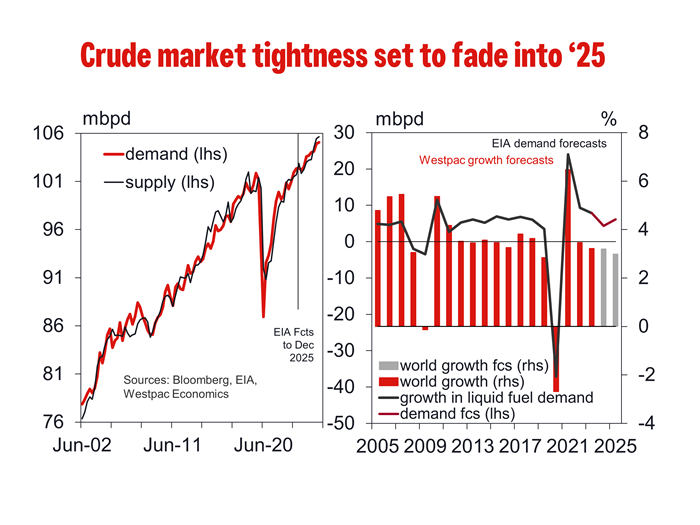

Iron ore
We see little reason to change our view that rising supplies and softening demand will see iron ore prices move lower through the second half of 2024. There were record Australian exports for the months of March and April, record Brazilian exports for the month of April and China record records for iron ore imports in January, February and April. Combine that with declining Chinese steel production, which is down around 4% year to date to April (down almost 7% through the year to April), it is little wonder that Chinese iron ore port inventories continue climbing hitting a fresh 2-year high, they are 2 standard deviations above seasonal average levels and are at the highest level against imports since February 2023 and compared to steel production, the highest since July 2022. As such, we are not at all surprised to see iron ore get as low as US$103/t was we were drafting this report and cannot rule out a potential further dip down towards $100 or even lower.

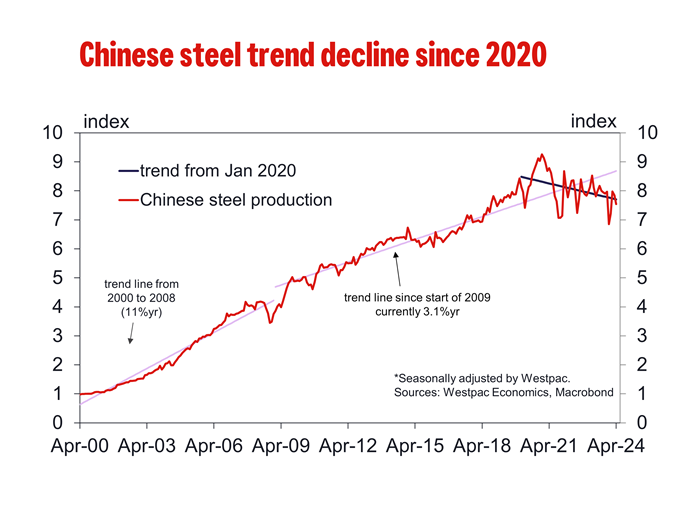
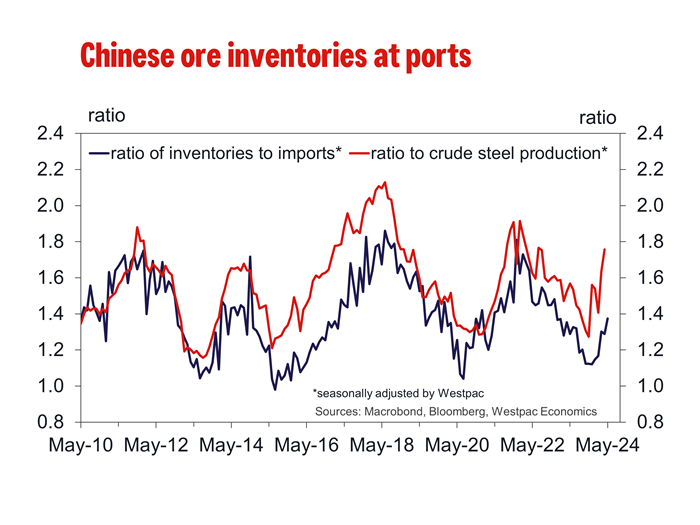
Base metals and the global transition
Base metals are showing signs of stabilising after the recent dramatic falls with aluminium down around 10% from the May highs, copper down 12%, zinc down 13% and nickel down a not insignificant 18%.
Regular readers may have noticed that this year we have focused more on the base metals group than usual. That is because we recognise the need to understand the longer-term dynamics for the critical minerals associated with the transition to net zero carbon emissions. (For a quick backgrounder in regard to this longer-term view see: Future prospects for Australia’s transition minerals). So far, we have covered copper, and aluminium while back in March we looked at the quintessential boom-bust mineral, nickel. The key theme unfolding from this research is that while the longer-term outlook remains particularly bright for these minerals (e.g. recent research suggests that under a net-zero scenario the global energy sector’s need for critical minerals will increase six-fold by 2040) that does not mean we have seen the end of two-way price volatility for this group. Overall, the transition to net-zero presents a positive outlook for Australia’s resources sector given our strong leadership in mining technology and services.
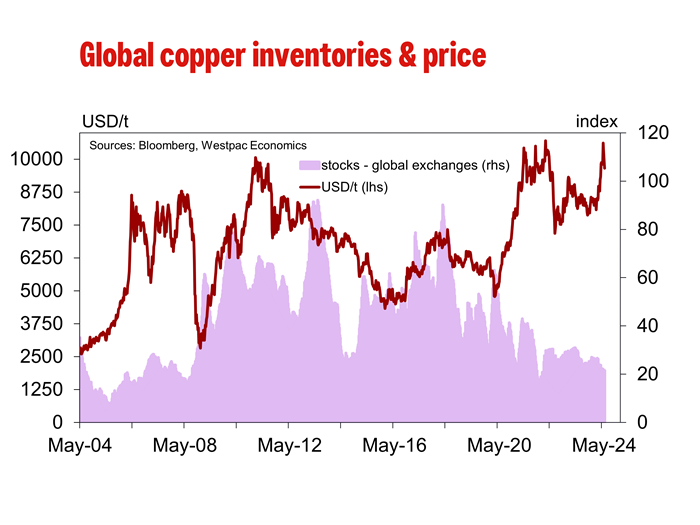
Copper
Our colleague Robert Rennie has been consistent with his view that copper was in a delivery squeeze/bubble. He saw prices being capped around $US12,000/t to US$15,000/t then once we pass this squeeze, prices should drop back through US$10,000 (our end-2024 forecast is US$9,300/t). As such, he was not surprised to see an around 10% slump over the last two weeks to below $10,000 as we went to press. The last week of May saw another huge rise in Shanghai copper inventories taking us to levels that have only been exceed three times before which set the market up for a break below US$10,000/t. However, more recently Rob noted that he still sees the risk that prices could extend lower given that copper inventory at SHFE warehouses continues to surge and are now 3.5 standard deviations above the 5-year average for this time of year. He also noted a Bloomberg report that Chinese refiners were set to export a total of between 40kt and 50kt of refined copper to LME warehouses in Asia. Chinese fabricators have been reluctant to pay up for copper as prices advanced toward US$10,000/t. This should continue to weigh on near term copper prices.
However, he again noted that Chilean copper production for the month of April was the lowest for that month all the way back to 2005 emphasising a supply problem for the months ahead. On top of this, Bloomberg noted that rising smelting capacity inactivity may be starting to filter into refined copper production “with satellite analysis from Earth-I showing a fifth of smelting capacity for the key industrial metal was offline in May”. An average of 20.8% was inactive last month, up 3.4% from May 2023 according to a statement from the company. Point being, once copper is done on this correction, it remains a strong buy on dips.
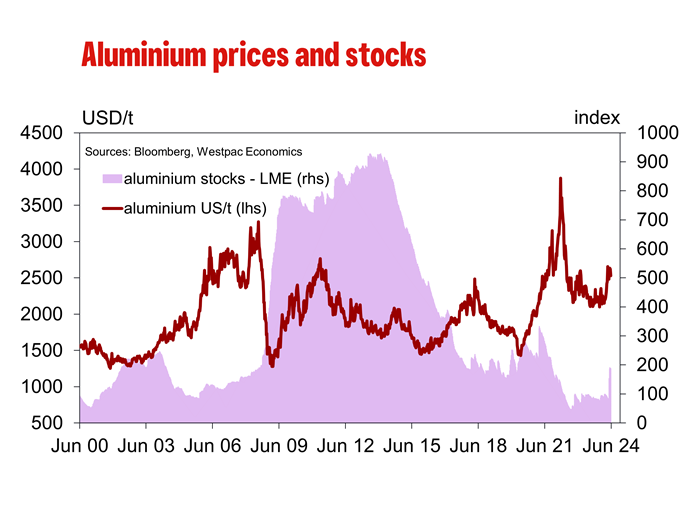
Aluminium and alumina
As we noted last month there has also been a lot of action in the aluminium market and we expect this metal to continue to outperform after the Chinese government stated in a work plan for 2024/25 that it would cut CO2 emissions by 3.9% and will implement far stricter limits for new aluminium output capacity.
This month we turn to the recent spike in alumina prices and find reasons to believe higher prices can be sustained for longer than we had previously anticipated. Alumina typically accounts for 30-40% of primary aluminium production costs. While most aluminium producers are vertically integrated (in electricity and alumina), marginal smelters are more exposed to volatility in alumina and power prices.
Over the past decade or so the aluminium industry has seen significant overcapacity resulting in prices generally tracking the cost curve. Price spikes in alumina/power lift the marginal cost of production and are supportive for the aluminium price (which is why aluminium is often described as ‘solid electricity’). Chinese overcapacity led to an oversupplied market with aluminium prices falling deep into the cost curve from 2021 to 2023. Then in early 2024 Alcoa curtailed output from the Kwinana refinery, removing around 1.4mtpa of alumina output. Combined with bauxite curtailments/shortages in China, this closure dragged alumina prices up out of the cost curve from around US$325/t at the end of 2023 to around US$375/t. This move was more likely due to the elimination of an oversupplied situation rather than the evolution of genuine tightness in the alumina market. Then a Rio Tinto declaration of force majeure on contracts with the Australian Yarwun & QAL refiners, due to fires affecting natural gas supplies, created market fears that real tightness would emerge in the alumina market. These refineries have a capacity of 7mtpa or around 4.5% global supply, 10% ex-China supply. The event saw prices push up through US$450/t.
China has excess alumina capacity (the industry is currently running at around 80% utilisation) and acts as the swing producer if seaborne prices are high enough. At least for the medium term, we expect this to remain the case. However, so far this year a series of safety stoppages have restricted the ability to lift alumina output and these issues appear unlikely to be resolved near term. Overall, for at least the medium term, a combination of constrained domestic alumina and increasing domestic alumina demand due to the resumption of smelter production in Yunnan are likely to limit China’s ability to materially lift exports to address tightness in the seaborne alumina market. As such, alumina prices are likely to remain elevated and potentially volatile.
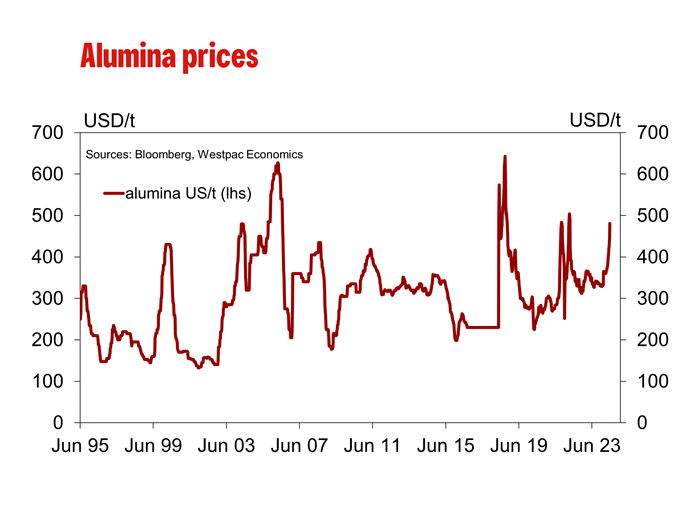
Stay informed with Westpac IQ
Get the latest reports straight to your inbox.
Browse topics
Disclaimer
©2025 Westpac Banking Corporation ABN 33 007 457 141 (including where acting under any of its Westpac, St George, Bank of Melbourne or BankSA brands, collectively, “Westpac”). References to the “Westpac Group” are to Westpac and its subsidiaries and includes the directors, employees and representatives of Westpac and its subsidiaries.
Things you should know
We respect your privacy: You can view the New Zealand Privacy Policy here, or the Australian Group Privacy Statement here. Each time someone visits our site, data is captured so that we can accurately evaluate the quality of our content and make improvements for you. We may at times use technology to capture data about you to help us to better understand you and your needs, including potentially for the purposes of assessing your individual reading habits and interests to allow us to provide suggestions regarding other reading material which may be suitable for you.
This information, unless specifically indicated otherwise, is under copyright of the Westpac Group. None of the material, nor its contents, nor any copy of it, may be altered in any way, transmitted to, copied of distributed to any other party without the prior written permission of the Westpac Group.
Disclaimer
This information has been prepared by Westpac and is intended for information purposes only. It is not intended to reflect any recommendation or financial advice and investment decisions should not be based on it. This information does not constitute an offer, a solicitation of an offer, or an inducement to subscribe for, purchase or sell any financial instrument or to enter into a legally binding contract. To the extent that this information contains any general advice, it has been prepared without taking into account your objectives, financial situation or needs and before acting on it you should consider the appropriateness of the advice. Certain types of transactions, including those involving futures, options and high yield securities give rise to substantial risk and are not suitable for all investors. We recommend that you seek your own independent legal or financial advice before proceeding with any investment decision.
This information may contain material provided by third parties. While such material is published with the necessary permission none of Westpac or its related entities accepts any responsibility for the accuracy or completeness of any such material. Although we have made every effort to ensure this information is free from error, none of Westpac or its related entities warrants the accuracy, adequacy or completeness of this information, or otherwise endorses it in any way. Except where contrary to law, Westpac Group intend by this notice to exclude liability for this information. This information is subject to change without notice and none of Westpac or its related entities is under any obligation to update this information or correct any inaccuracy which may become apparent at a later date. This information may contain or incorporate by reference forward-looking statements. The words “believe”, “anticipate”, “expect”, “intend”, “plan”, “predict”, “continue”, “assume”, “positioned”, “may”, “will”, “should”, “shall”, “risk” and other similar expressions that are predictions of or indicate future events and future trends identify forward-looking statements. These forward-looking statements include all matters that are not historical facts. Past performance is not a reliable indicator of future performance, nor are forecasts of future performance. Whilst every effort has been taken to ensure that the assumptions on which any forecasts are based are reasonable, the forecasts may be affected by incorrect assumptions or by known or unknown risks and uncertainties. The ultimate outcomes may differ substantially from any forecasts.
Conflicts of Interest: In the normal course of offering banking products and services to its clients, the Westpac Group may act in several capacities (including issuer, market maker, underwriter, distributor, swap counterparty and calculation agent) simultaneously with respect to a financial instrument, giving rise to potential conflicts of interest which may impact the performance of a financial instrument. The Westpac Group may at any time transact or hold a position (including hedging and trading positions) for its own account or the account of a client in any financial instrument which may impact the performance of that financial instrument.
Author(s) disclaimer and declaration: The author(s) confirms that (a) no part of his/her compensation was, is, or will be, directly or indirectly, related to any views or (if applicable) recommendations expressed in this material; (b) this material accurately reflects his/her personal views about the financial products, companies or issuers (if applicable) and is based on sources reasonably believed to be reliable and accurate; (c) to the best of the author’s knowledge, they are not in receipt of inside information and this material does not contain inside information; and (d) no other part of the Westpac Group has made any attempt to influence this material.
Further important information regarding sustainability-related content: This material may contain statements relating to environmental, social and governance (ESG) topics. These are subject to known and unknown risks, and there are significant uncertainties, limitations, risks and assumptions in the metrics, modelling, data, scenarios, reporting and analysis on which the statements rely. In particular, these areas are rapidly evolving and maturing, and there are variations in approaches and common standards and practice, as well as uncertainty around future related policy and legislation. Some material may include information derived from publicly available sources that have not been independently verified. No representation or warranty is made as to the accuracy, completeness or reliability of the information. There is a risk that the analysis, estimates, judgements, assumptions, views, models, scenarios or projections used may turn out to be incorrect. These risks may cause actual outcomes to differ materially from those expressed or implied. The ESG-related statements in this material do not constitute advice, nor are they guarantees or predictions of future performance, and Westpac gives no representation, warranty or assurance (including as to the quality, accuracy or completeness of the statements). You should seek your own independent advice.
Additional country disclosures:
Australia: Westpac holds an Australian Financial Services Licence (No. 233714). You can access Westpac’s Financial Services Guide here or request a copy from your Westpac point of contact. To the extent that this information contains any general advice, it has been prepared without taking into account your objectives, financial situation or needs and before acting on it you should consider the appropriateness of the advice.
New Zealand: In New Zealand, Westpac Institutional Bank refers to the brand under which products and services are provided by either Westpac (NZ division) or Westpac New Zealand Limited (company number 1763882), the New Zealand incorporated subsidiary of Westpac ("WNZL"). Any product or service made available by WNZL does not represent an offer from Westpac or any of its subsidiaries (other than WNZL). Neither Westpac nor its other subsidiaries guarantee or otherwise support the performance of WNZL in respect of any such product. WNZL is not an authorised deposit-taking institution for the purposes of Australian prudential standards. The current disclosure statements for the New Zealand branch of Westpac and WNZL can be obtained at the internet address www.westpac.co.nz.
Singapore: This material has been prepared and issued for distribution in Singapore to institutional investors, accredited investors and expert investors (as defined in the applicable Singapore laws and regulations) only. Recipients of this material in Singapore should contact Westpac Singapore Branch in respect of any matters arising from, or in connection with, this material. Westpac Singapore Branch holds a wholesale banking licence and is subject to supervision by the Monetary Authority of Singapore.
Fiji: Unless otherwise specified, the products and services for Westpac Fiji are available from www.westpac.com.fj © Westpac Banking Corporation ABN 33 007 457 141. This information does not take your personal circumstances into account and before acting on it you should consider the appropriateness of the information for your financial situation. Westpac Banking Corporation ABN 33 007 457 141 is incorporated in NSW Australia and registered as a branch in Fiji. The liability of its members is limited.
Papua New Guinea: Unless otherwise specified, the products and services for Westpac PNG are available from www.westpac.com.pg © Westpac Banking Corporation ABN 33 007 457 141. This information does not take your personal circumstances into account and before acting on it you should consider the appropriateness of the information for your financial situation. Westpac Banking Corporation ABN 33 007 457 141 is incorporated in NSW Australia. Westpac is represented in Papua New Guinea by Westpac Bank - PNG - Limited. The liability of its members is limited.
U.S.: Westpac operates in the United States of America as a federally licensed branch, regulated by the Office of the Comptroller of the Currency. Westpac is also registered with the US Commodity Futures Trading Commission (“CFTC”) as a Swap Dealer, but is neither registered as, or affiliated with, a Futures Commission Merchant registered with the US CFTC. The services and products referenced above are not insured by the Federal Deposit Insurance Corporation (“FDIC”). Westpac Capital Markets, LLC (‘WCM’), a wholly-owned subsidiary of Westpac, is a broker-dealer registered under the U.S. Securities Exchange Act of 1934 (‘the Exchange Act’) and member of the Financial Industry Regulatory Authority (‘FINRA’). In accordance with APRA's Prudential Standard 222 'Association with Related Entities', Westpac does not stand behind WCM other than as provided for in certain legal agreements between Westpac and WCM and obligations of WCM do not represent liabilities of Westpac.
This communication is provided for distribution to U.S. institutional investors in reliance on the exemption from registration provided by Rule 15a-6 under the Exchange Act and is not subject to all of the independence and disclosure standards applicable to debt research reports prepared for retail investors in the United States. WCM is the U.S. distributor of this communication and accepts responsibility for the contents of this communication. Transactions by U.S. customers of any securities referenced herein should be effected through WCM. All disclaimers set out with respect to Westpac apply equally to WCM. If you would like to speak to someone regarding any security mentioned herein, please contact WCM on +1 212 389 1269. Investing in any non-U.S. securities or related financial instruments mentioned in this communication may present certain risks. The securities of non-U.S. issuers may not be registered with, or be subject to the regulations of, the SEC in the United States. Information on such non-U.S. securities or related financial instruments may be limited. Non-U.S. companies may not be subject to audit and reporting standards and regulatory requirements comparable to those in effect in the United States. The value of any investment or income from any securities or related derivative instruments denominated in a currency other than U.S. dollars is subject to exchange rate fluctuations that may have a positive or adverse effect on the value of or income from such securities or related derivative instruments.
The author of this communication is employed by Westpac and is not registered or qualified as a research analyst, representative, or associated person of WCM or any other U.S. broker-dealer under the rules of FINRA, any other U.S. self-regulatory organisation, or the laws, rules or regulations of any State. Unless otherwise specifically stated, the views expressed herein are solely those of the author and may differ from the information, views or analysis expressed by Westpac and/or its affiliates.
UK: The London branch of Westpac is authorised in the United Kingdom by the Prudential Regulation Authority (PRA) and is subject to regulation by the Financial Conduct Authority (FCA) and limited regulation by the PRA (Financial Services Register number: 124586). The London branch of Westpac is registered at Companies House as a branch established in the United Kingdom (Branch No. BR000106). Details about the extent of the regulation of Westpac’s London branch by the PRA are available from us on request.
This communication is not being made to or distributed to, and must not be passed on to, the general public in the United Kingdom. Rather, this communication is being made only to and is directed at (a) those persons falling within the definition of Investment Professionals (set out in Article 19(5) of the Financial Services and Markets Act 2000 (Financial Promotion) Order 2005 (the “Order”)); (b) those persons falling within the definition of high net worth companies, unincorporated associations etc. (set out in Article 49(2)of the Order; (c) other persons to whom it may lawfully be communicated in accordance with the Order or (d) any persons to whom it may otherwise lawfully be made (all such persons together being referred to as “relevant persons”). Any person who is not a relevant person should not act or rely on this communication or any of its contents. In the same way, the information contained in this communication is intended for “eligible counterparties” and “professional clients” as defined by the rules of the Financial Conduct Authority and is not intended for “retail clients”. Westpac expressly prohibits you from passing on the information in this communication to any third party.
European Economic Area (“EEA”): This material may be distributed to you by either: (i) Westpac directly, or (ii) Westpac Europe GmbH (“WEG”) under a sub-licensing arrangement. WEG has not edited or otherwise modified the content of this material. WEG is authorised in Germany by the Federal Financial Supervision Authority (‘BaFin’) and subject to its regulation. WEG’s supervisory authorities are BaFin and the German Federal Bank (‘Deutsche Bundesbank’). WEG is registered with the commercial register (‘Handelsregister’) of the local court of Frankfurt am Main under registration number HRB 118483. In accordance with APRA’s Prudential Standard 222 ‘Association with Related Entities’, Westpac does not stand behind WEG other than as provided for in certain legal agreements (a risk transfer, sub-participation and collateral agreement) between Westpac and WEG and obligations of WEG do not represent liabilities of Westpac. Any product or service made available by WEG does not represent an offer from Westpac or any of its subsidiaries (other than WEG). All disclaimers set out with respect to Westpac apply equally to WEG.
This communication is not intended for distribution to, or use by any person or entity in any jurisdiction or country where such distribution or use would be contrary to local law or regulation.
This communication contains general commentary, research, and market colour. The communication does not constitute investment advice. The material may contain an ‘investment recommendation’ and/or ‘information recommending or suggesting an investment’, both as defined in Regulation (EU) No 596/2014 (including as applicable in the United Kingdom) (“MAR”). In accordance with the relevant provisions of MAR, reasonable care has been taken to ensure that the material has been objectively presented and that interests or conflicts of interest of the sender concerning the financial instruments to which that information relates have been disclosed.
Investment recommendations must be read alongside the specific disclosure which accompanies them and the general disclosure which can be found here. Such disclosure fulfils certain additional information requirements of MAR and associated delegated legislation and by accepting this communication you acknowledge that you are aware of the existence of such additional disclosure and its contents.
To the extent this communication comprises an investment recommendation it is classified as non-independent research. It has not been prepared in accordance with legal requirements designed to promote the independence of investment research and therefore constitutes a marketing communication. Further, this communication is not subject to any prohibition on dealing ahead of the dissemination of investment research.

